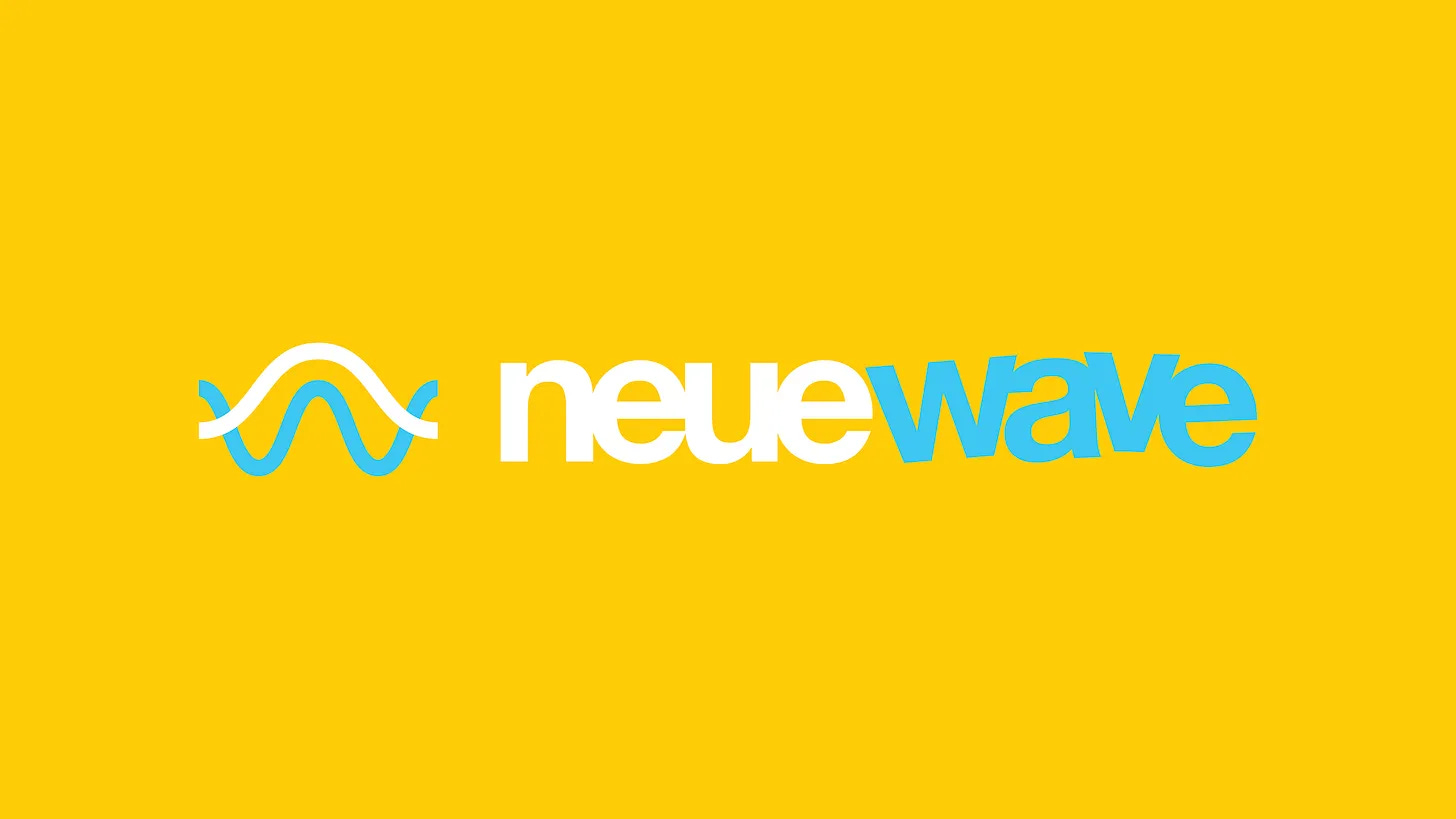August 2025 Trend Report
True Whimsy at Dodger Stadium
Welcome to neuewave!
August is upon us, and as we look at the content landscape of the last few weeks, the themes we've been following are reaching a critical point. The tension between the raw, human messiness we crave and the manufactured world we're entering is growing more intense. People are no longer just searching for a moment of release; they are actively working to take back control and create it for themselves. Yet, in the middle of this all, we are still finding time to collectively laugh and connect over Jet2 holidays and the balancing acts of the Nicki Minaj challenge.
Speaking of collective connection, the neuemotion team is gearing up for our annual creative retreat! We'll be stepping away from the daily grind to reconnect, explore new ideas, and lay the groundwork for some exciting new projects. We can’t wait to be all together irl—so be on the lookout for special content coming out of that in the near future.
🧚♀️ Whimsy-core
There may not be a song of the summer for 2025, but there is undoubtedly a word of the summer:
whimsy.
What the New York Times nearly named the “Vibe of 2025” has exploded online this summer, from whimsical daily habits and aesthetics to whimsy-focused content creators and discourse around what whimsy even is.
Where we have talked about people romanticizing life’s small moments and main character syndrome taking over, coupled with the rise of kidulting and hobby clubs in recent years, the new fascination with pursuing a whimsical life feels like a natural progression, infusing joy, play, and gratitude into a new practice that makes life more wonder-filled.
Google searches for ‘whimsical’ or ‘whimsy’ has nearly doubled in the last five years, and content feeds and comment sections are full of declarations, tips, and rituals to making life more whimsical, from deploying a bubble gun out your window in traffic, to board game clubs, to reframing “looking for something you lost” to “treasure hunt”.
How this shows up on social:
The first instance of the “how are we making our lives more whimsical" video accrued over 8 million views, with 62,000 comments of people giving their little ways they pursue a more whimsical life. And since then? Nearly 400k videos of whimsical pursuits have hit TikTok.
While it all seems joyful and wholesome, there is a discourse brewing that has the potential to turn people off altogether. Can you actually pursue whimsy, or must it be organic to who you are? A content creator who tried to discern between “true whimsy” and “manufactured whimsy” has garnered some heat in the comments, accused of trying to gatekeep what can be whimsical and what can’t: one comment reads “Defining whimsy is not true whimsy”. Not just here, but other discourses around whether it is okay to have to look up whimsical behavior have started to surface, and may continue to persist until the word “whimsy” is so overused that it disappears altogether - like it probably has for you in the course of reading this section (semantic satiation is real y’all). Time will tell.
 Tiktok failed to load.
Tiktok failed to load.Enable 3rd party cookies or use another browser
🏟️ Trading Card Craze
Trading cards, playing cards, card games… there is a serious market for those who love this physical medium. The trading card game (TCG’s) market has been rapidly rising in the last few years, and is predicted to hit $11.8 Billion by 2030, fueled by childhood nostalgia and the love for collectibles.
Pokémon and One Piece have become their own force in the trading card market, with Fast Company reporting that Pokémon has surged 20% in value earlier this year, and is expected to continue. Card shops across the country, and even Costco, have had to limit purchasing to one product per customer during major Pokémon set drops. The trading card market is maybe the closest thing to the old Best Buy Black Friday brawls we used to witness online, with viral videos of people swarming product displays looking to get their hands on the latest drop.
One Piece is no exception; the major anime-turned-TCG is growing rapidly in popularity and pulling major brand collaborations, such as Dodger Stadium hosting a One Piece Night with merch and limited edition cards, and repeated collabs with Burger King that include a limited meal and merch. Considering Netflix has recently dropped a report talking about the rise of anime popularity, with over half of households on their platform now streaming anime content, interest in anime-based TCGs will only continue to grow (to the inevitable dismay of the hardcore fanbase).
How this shows up on social:
There are over 785k videos on TikTok alone that use the hashtag #packopening featuring excited TCG fans opening sealed card packs live on camera, sharing in the excitement of the cards they want and ultimately pull.
Additionally, major collabs, like the Dodgers platforming the One Piece TCG was major news on social media, discussing what it means for the anime to be increasingly becoming mainstream, and people outside of Los Angeles clamoring online to get a look at the card, which are now being resold for upwards of $3,000.
🤖 Robophobia
The AI revolt has taken a… strange turn. We have previously written about the increased resistance when it comes to the infiltration of AI into daily lives, with silly trends to even more serious pursuits of digital detoxes. However, in the last month we have seen the criticism take the absurd, strange, and semi-dark turn the internet often takes, with people identifying as “robophobic”-- a hatred of robots and artificial intelligence, and using new “slurs” to vilify them.
Clankers– originally a derogatory term used in Star Wars, has now become a common term among the chronically online to put down AI and robots. Specifically, it is used to refer to humanoid robots or AI software doing jobs that were typically reserved for humans, such as serving food or cleaning. This push back against the development of certain technologies continues to show a real fear of technology threatening the livelihood and careers of real humans.
While a majority of this content is primarily humorous rather than genuinely antagonistic toward robots, it has still created a discourse online that feels borderline dystopian. Is it all fun and games, or is it indicative of the public perception toward the growing role technology has in our society? Probably a bit of both.
How this shows up on social:
A growing collection of content is surfacing online of people reenacting or reiterating discriminatory ideologies or experiences that have been historically used against minority groups, but twisting them to be toward AI and robots to bring humor to an unsettling reality, and unite people against the one common “enemy” we all share.
🛍️ The Deinfluenced
Deinfluencing– where influencers took to their social channels to tell their followers what not to buy— surfaced in early 2023 as a direct response to consumers feeling jaded and anxious about consumerism and the environmental/economic impacts associated with it. For influencers, long valued for their authenticity and credibility in product recommendations, deinfluencing quickly became a powerful new symbol of trust and transparency.
Fast forward to today, where economic and environmental stressors are even more profound, we have seen a shift in users where they no longer look to influencers to tell them what not to buy, but are publicly begging to be deinfluenced, or stopped from making unnecessary purchases altogether. In a time where there is more pressure than ever to stay on an accelerating trend hamster wheel, people are rebelling against this through being candid on their own socials about the things they are interested in buying, and asking the comment section to talk them out of it.
How this shows up on social:
There are two social trends that have framed users as “deinfluenced by choice" , the first being the deinfluence my wishlist trend, with either a compilation of products or a single product they are interested in buying. Go to the comments: you’ll see a slew of “I have this and they were so uncomfortable” and “there is a cheaper and better version of this, go buy that one” conversations, where people are finding support and seeking knowledge from online peers to shop more responsibly.
The second trend turns being deinfluenced into a humiliation ritual of sorts, users making raw video montages of them saying out loud the thing they almost impulsively bought, to embarrass themselves into not buying it. The first video has gained over a million views in a few days, with comments saying how “genius it is because it’s so embarrassing”, to others calling it “a piece of performance art about consumerism during a recession”.
Contrastingly, a few videos have backfired for creators, as the products being listed off are motivating people in the comments to want to then go buy it, or complimenting the creator for having good taste.
While the last few months have been characterized by a draw towards things that are messy and raw in revolt of the growing technological perfectionism that is infiltrating our culture, this month we are seeing an attempt to take back our control and personal agency in a world that is both curated yet unpredictable.
The contradiction between a hyper-controlled and perfected existence being promised to us, while the world continues to feel volatile and disorganized, has us engaging with content that feels like we are taking back the reins, rather than passively riding this roller coaster.While some may see a Costco frenzy over Pokémon cards, or a futile attempt to put rules around something as free as whimsy, we see a testament to the growing need for autonomy, control, and the lengths people will go to achieve it.








